Read also RACK OR HOUSING FOR CLOGS?
Some
cart ruts from the Targia district, in Syracuse, and most of the
cart ruts from Granatari Vecchi, in Rosolini, give the impression of having been impressed, modelled, on a rock that was originally viscous, not entirely solid. As absurd as this hypothesis may seem, especially in Granatari Vecchi, the softness of the shapes and the at least anomalous uniformity of the rock bank, as if it were a concrete casting, which hosts the
cart ruts, is
unicum compared to the lithic context in the area.
In Targia this phenomenon is less impressive but if we consider the
cart ruts essentially
cart tracks, therefore furrowed roads indirectly resulting from the repeated passage of carts along the same route, we do not understand why such uniformity and smoothness is present, in the majority of cases, also on the parts not affected by the passage of the wheels, that is, between the two furrows and along the edges.
An explanation for such softness of shapes can be given by the atmospheric agents that over the millennia have smoothed out every original roughness. However, the same erosion phenomenon should have affected not only the portion of the rock bank where the
cart ruts stand, but the entire rock bank outcropping in the area. Why then, for example in the Targia district, were the rock outcrops around the
cart ruts spared from this wear and tear by atmospheric events?
The idea that the rock around the cart tracks would have been less subject to atmospheric agents and therefore more protected by the vegetation that grew around and in the few accumulations of earth in the same rock outcrops, clashes with the fact that the only elements that could have really impeded the growth of vegetation would have been the furrows, since they were in direct contact with the iron wheels of the carts. In fact, in all the
trazzere (country roads) in the area, vegetation does not grow only along the portions of the road frequently beaten by the wheels of passing vehicles.
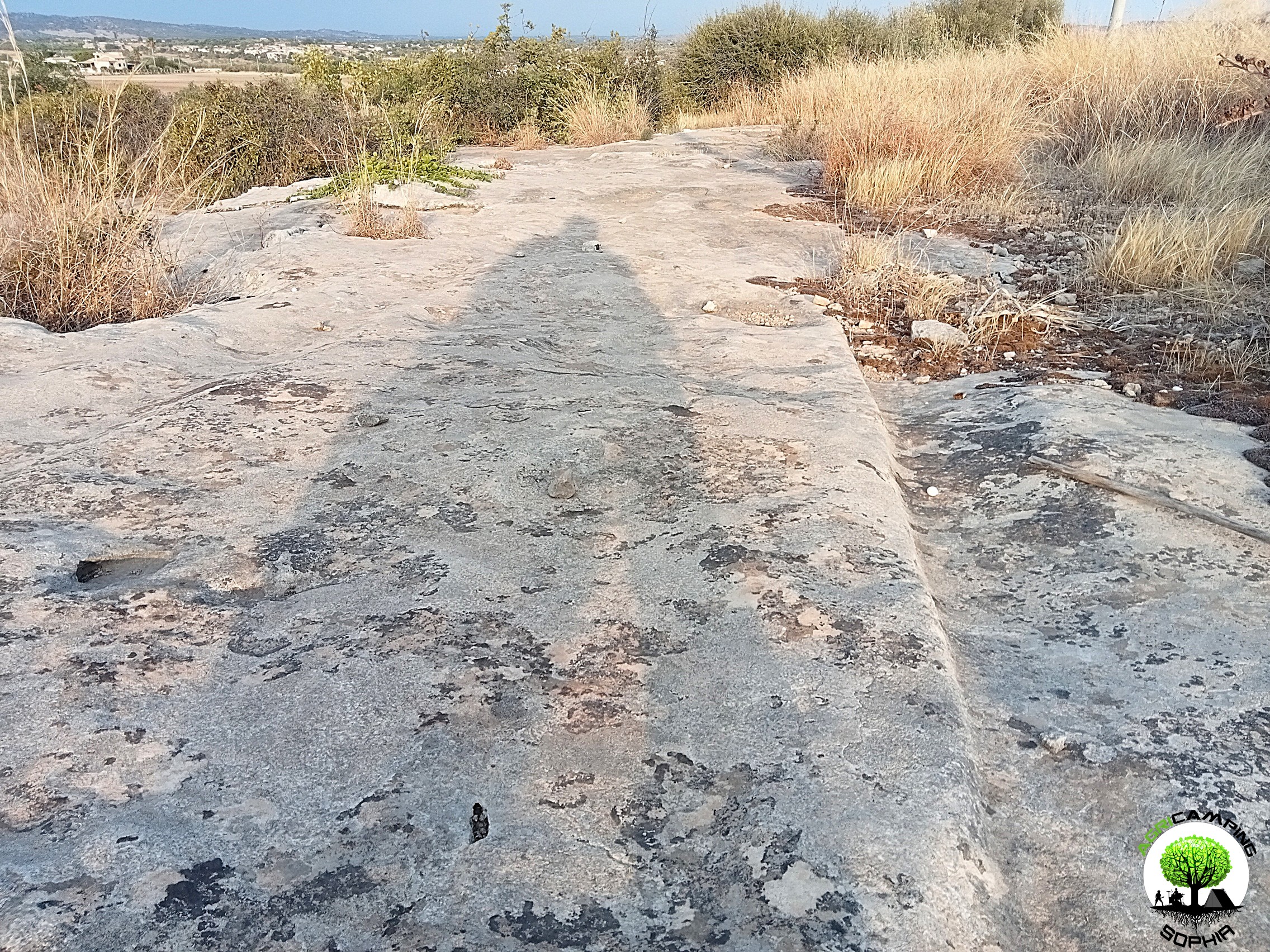
However, we must also consider the possible towing of oxen, whose movement along the cart track, in addition to determining a certain impediment to the growth of vegetation, should have caused a sort of pitting, at least hinted at, between the two furrows and at the edges of the cart track (consistent with the theory of the formation of the furrows due to wear of the underlying limestone rock): at Granatari Vecchi, there is simply no trace of it. Perhaps atmospheric agents have erased the faint traces of animal passage? Why have such atmospheric agents not also determined a coherent smoothing of the rocky protrusions surrounding the
cart ruts? In other words, how come moving even just ten meters from the cart ruts the lithic morphology is radically different, as if they had undergone different atmospheric phenomena?
Another curiosity is that the same degree of “softening” of the rock forms of the Granatari Vecchi district is not found in other
cart ruts in the area, within a radius of about fifteen kilometers. For example, the
cart ruts in the Pizzuta district, present between one furrow and another a type of sandstone morphologically indistinguishable from the surrounding rock banks, which has evidently undergone the same atmospheric agents. Thus, even in the Cugni or Maccari districts, the type of wear of the limestone rock between the furrows is consistent with the wear of the lithic context in which the cart ruts are located.
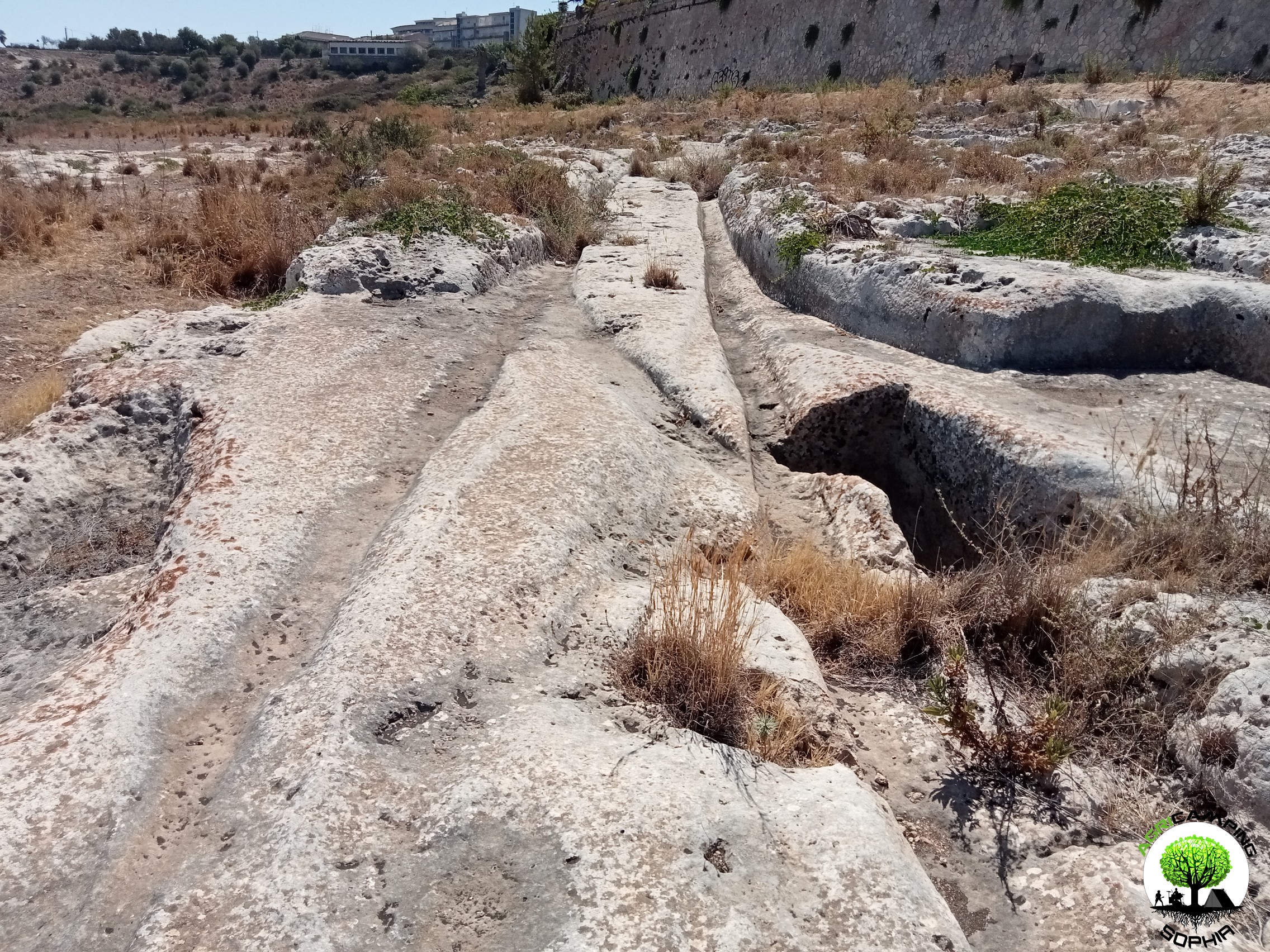
In works by the Sicilian hand, having a functional purpose (therefore technical and not artistic,
sic et simpliciter a purpose similar to a road…), present in the same territory as the
cart ruts and theoretically contemporary with these (such as for example the latomie in the Pizzuta district, in the Targia district and the walls of Eloro), the traces of the working tools used are evident (i.e. pickaxes, chisels, mallets, saws), corners that are not very finished and smooth, edges that are not very regular, a fair amount of porosity and roughness of the material. The
cart ruts, in particular, by Granatari Vecchi, despite having a similar presumed technical purpose (and not architectural or artistic), appear instead much more refined, smooth, smooth, with uniformly rounded corners, even in portions not affected by the passage of the wheels (for which therefore it is not possible to hypothesize an involuntary smoothing, a collateral effect of the action of the wheels).
This evidence represents a further indication of the fact that such structures, i.e.
cart ruts and Sicilian works cited, with extreme probability, do not belong to the same historical period, nor were they built with the same means and by the same hand.
Furthermore, it is not realistic to hypothesize that such differences in smoothing are due to a systematic operation conducted manually and on the
cart ruts, because it goes against all the logical and practical sense that Greek culture has accustomed us to, also considering the fact that they did not reserve such treatment even for ornamental works, such as capitals.
To sum up, in consideration of
what has been written so far regarding the
cart ruts, I believe that it can now be reasonably excluded that the
cart ruts are simply the indirect result of the passage of carts, not because it is physically impossible (considering the relative softness of rocks such as calcarenite or sandstone), but because of the presence of "corollary" elements that cannot be derived from such passage. If carefully analysed, as has been partly done with respect to the Maltese
cart ruts, they cannot objectively be considered structures contemporary with the Greek colonisation. That they exploited them, even simply as furrows to "pay off" the work necessary to extract the blocks, is evident, and this should logically refer to the possibility that the Siceliots had already found them there.
Apart from the furrows, various
cart ruts do not have much else in common (think of the cart tracks of contrada Granatari Vecchi and those of contrada Pizzuta) and do not even appear to be contemporary with each other: however, establishing their greater antiquity is not an easy operation, since those that are better preserved are also those that show a greater degree of softness of the shapes, of rounded corners, therefore theoretically they appear like this because they have been subjected to atmospheric agents for a longer time, unless they were born directly like this, that is by design, and therefore appear better preserved precisely because they are in fact more recent than the more ruined
cart ruts.
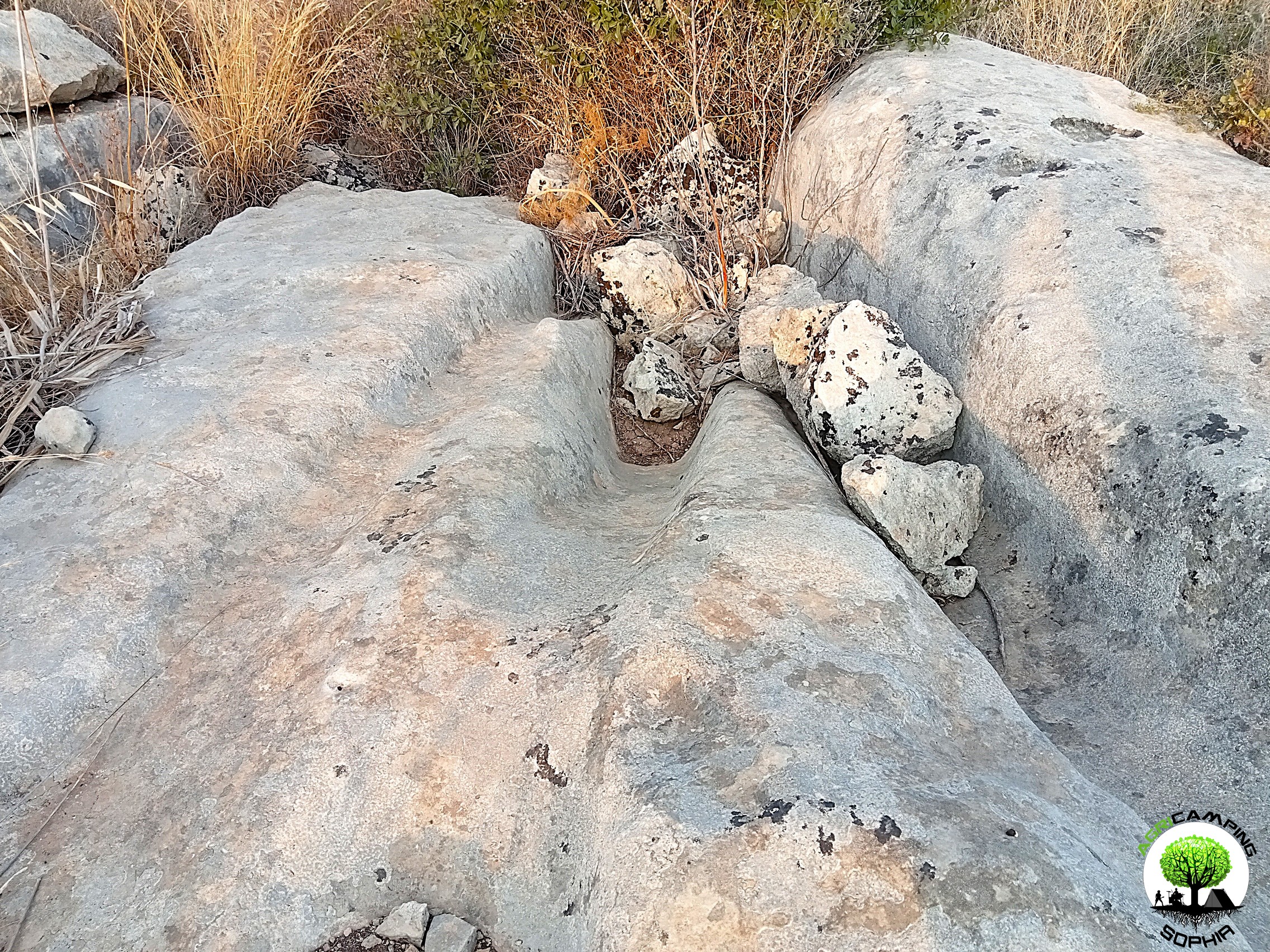
We do not know very much about the cultures that preceded the Greeks in Sicily and the little that we know academically is incompatible with the creation of the
cart ruts.
Returning to the reflection that constituted the incipit of my very personal study on the
cart ruts, although the cult of the dead is an essential part of human cultures, if we look at human history as a whole, it has never determined efforts greater than those aimed at improving the quality of life. Although
ipse dixit has indicated the cult of death as the main explanation for any hole dug in a rock face or any monument whose purpose is not clear, the greatest efforts (energetic, economic and intellectual) of men have always been directed towards improving the quality of life, as demonstrated by the evidence that since the discovery of fire we have in a relatively short time ended up developing a culture capable of sending
rovers and
drones to explore Mars, with consequent technological benefits that have gradually radically improved the quality of life. Instead, the cemeteries have remained more or less the same…
The
cart ruts are widespread throughout the Sicilian territory, in particular along the entire south-western and south-eastern coastal area (personally I have so far detected traces, more or less evident, in the Targia district and near the Greek Theatre in Syracuse; in the area of the Vendicari Reserve therefore in the Pizzuta district, in Eloro, in the Maccari district and in the San Lorenzo district; between Pachino and Portopalo di Capo Passero in the Cugni and Torre Fano districts; near Rosolini in the Granatari Vecchi district; near Cava Grande del Cassibile; in Noto Antica and in Castelluccio di Noto), in Malta, in Turkey, in Spain and in many other areas of the world. Doesn't this perhaps constitute a sign that academic research should take these infamous
cart ruts a little more seriously, starting to consider them as an expression of a hypothetical Mediterranean culture at least, preceding Greek expansionism, scaling down the passion for the cult of the dead that is attributed to pre-Hellenic civilizations, and therefore starting to shake off some prejudices and some excessive
ipse dixit?
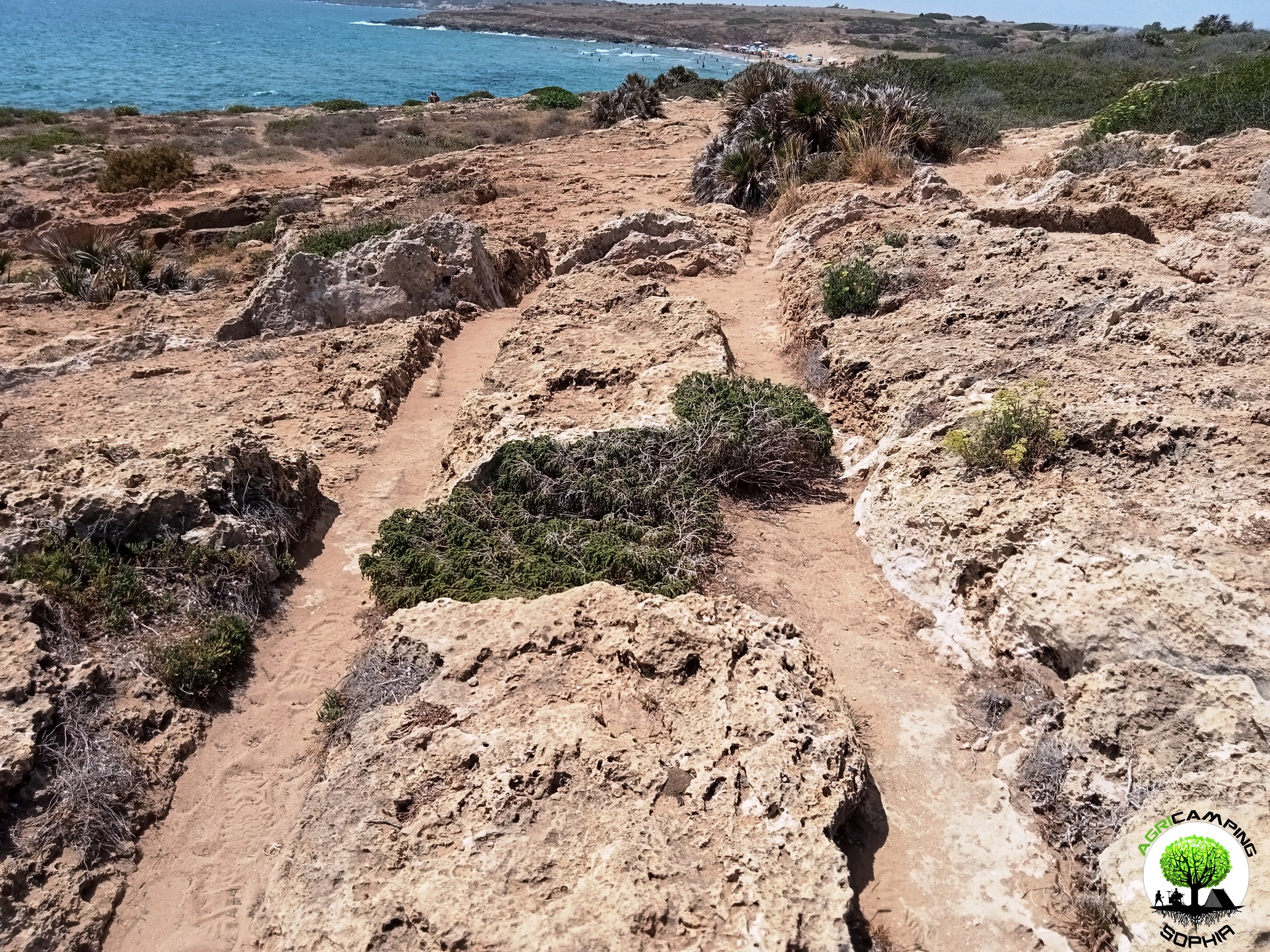 CART RUTS AND A FEW TOO MANY PROJECTIONS
CART RUTS AND A FEW TOO MANY PROJECTIONS
Read also THE POLISHING OF THE CART RUTS
I will skip any preamble, referring to to what has already been written regarding the presence of cart ruts in south-eastern Sicily.Considering the possibility that the cart ruts were gradually dug by the passage of carts pulled by pack animals, for example pairs of oxen, observing certain sections of the cart ruts present in the Granatari Vecchi district, in Rosolini, and in the Pizzuta district, close to the Vendicari Reserve, two questions arise:
1. Why force the animals to pass over rough surfaces and protrusions high, compared to the base of the furrows, even 60-70 centimeters?
2. Why, in the presence of such obstacles, not opt for a detour?
For Mottershead, Pearson and Schaefer such protrusions appeared later, since at the time of the passage of the wagons, a layer of earth covered the rocky bank, thus not making the obstacle...






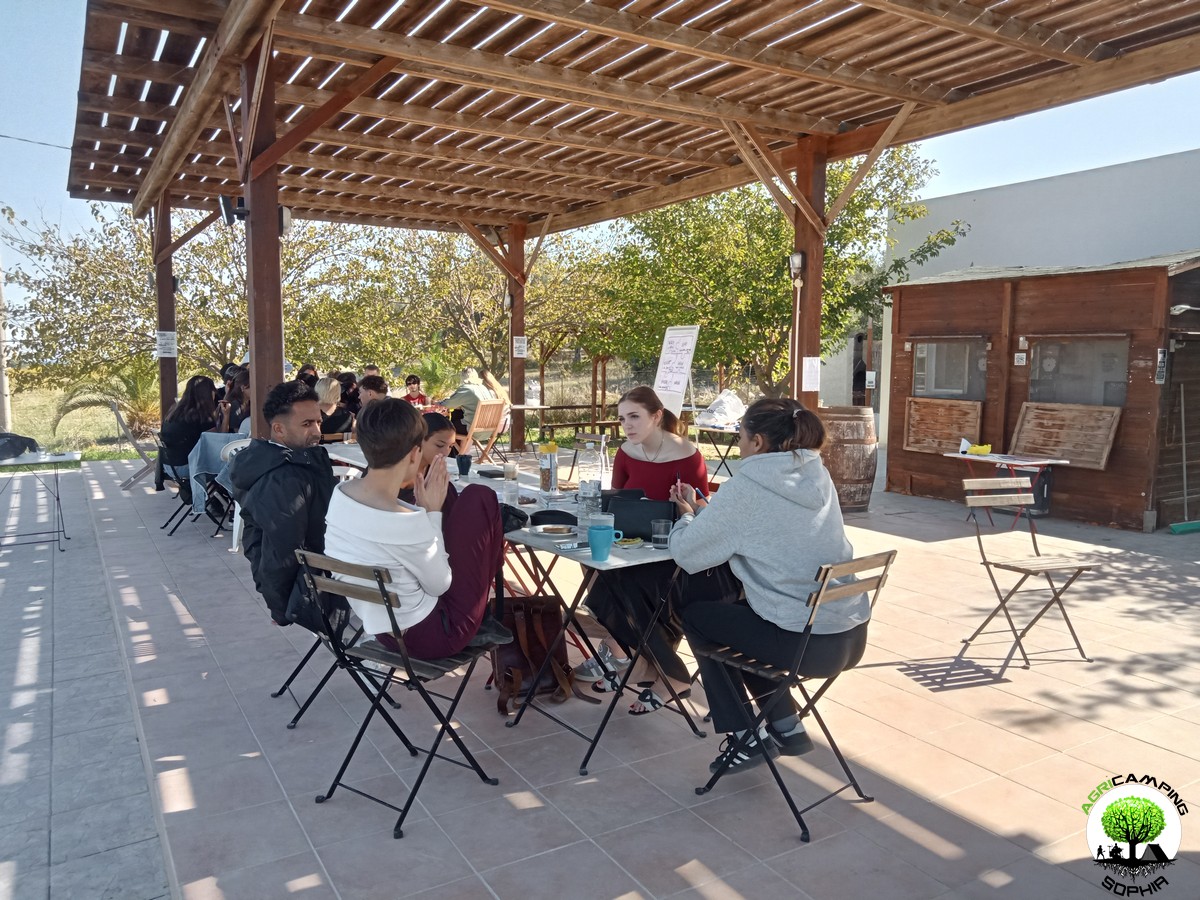 DO YOU WANT TO ORGANIZE AN ERASMUS AT AGRICAMPING SOPHIA?
DO YOU WANT TO ORGANIZE AN ERASMUS AT AGRICAMPING SOPHIA? RACK OR HOUSING FOR CLOGS?
RACK OR HOUSING FOR CLOGS? CART RUTS CUT FROM QUARRIES
CART RUTS CUT FROM QUARRIES CART RUTS AND A FEW TOO MANY PROJECTIONS
CART RUTS AND A FEW TOO MANY PROJECTIONS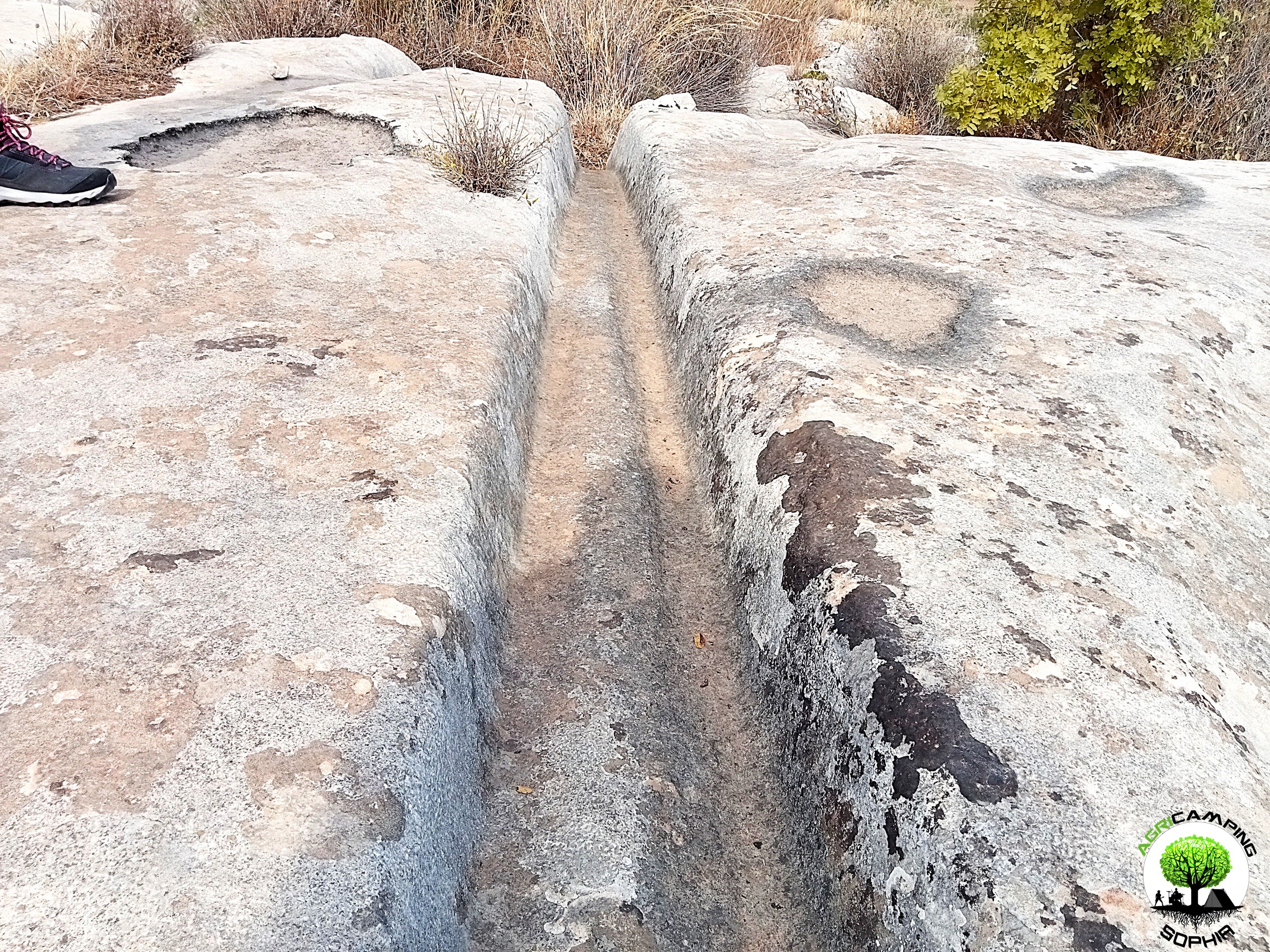 THE POLISHING OF THE CART RUTS
THE POLISHING OF THE CART RUTS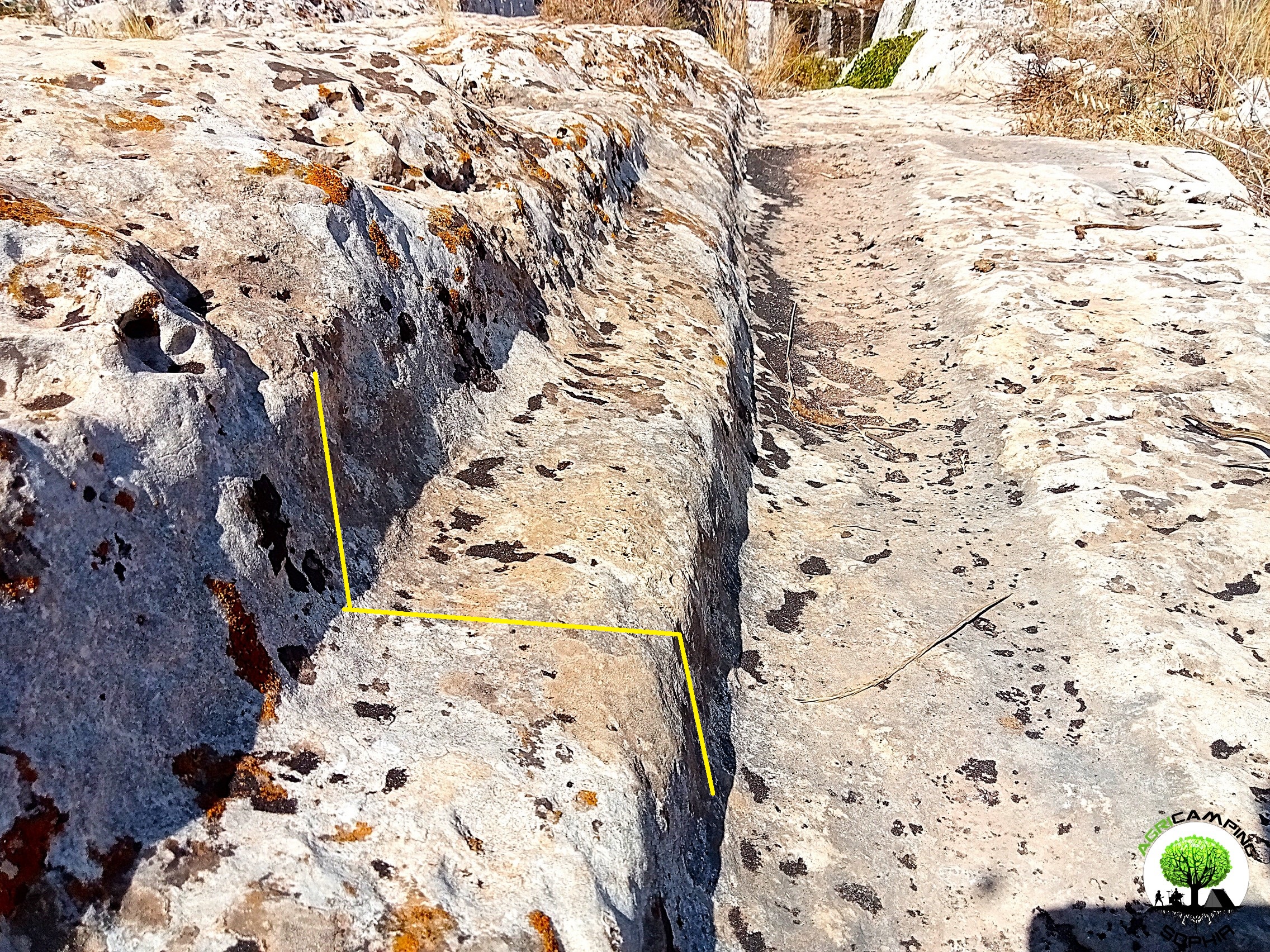 THE PROBLEMATIC EDGES OF THE CART RUTS
THE PROBLEMATIC EDGES OF THE CART RUTS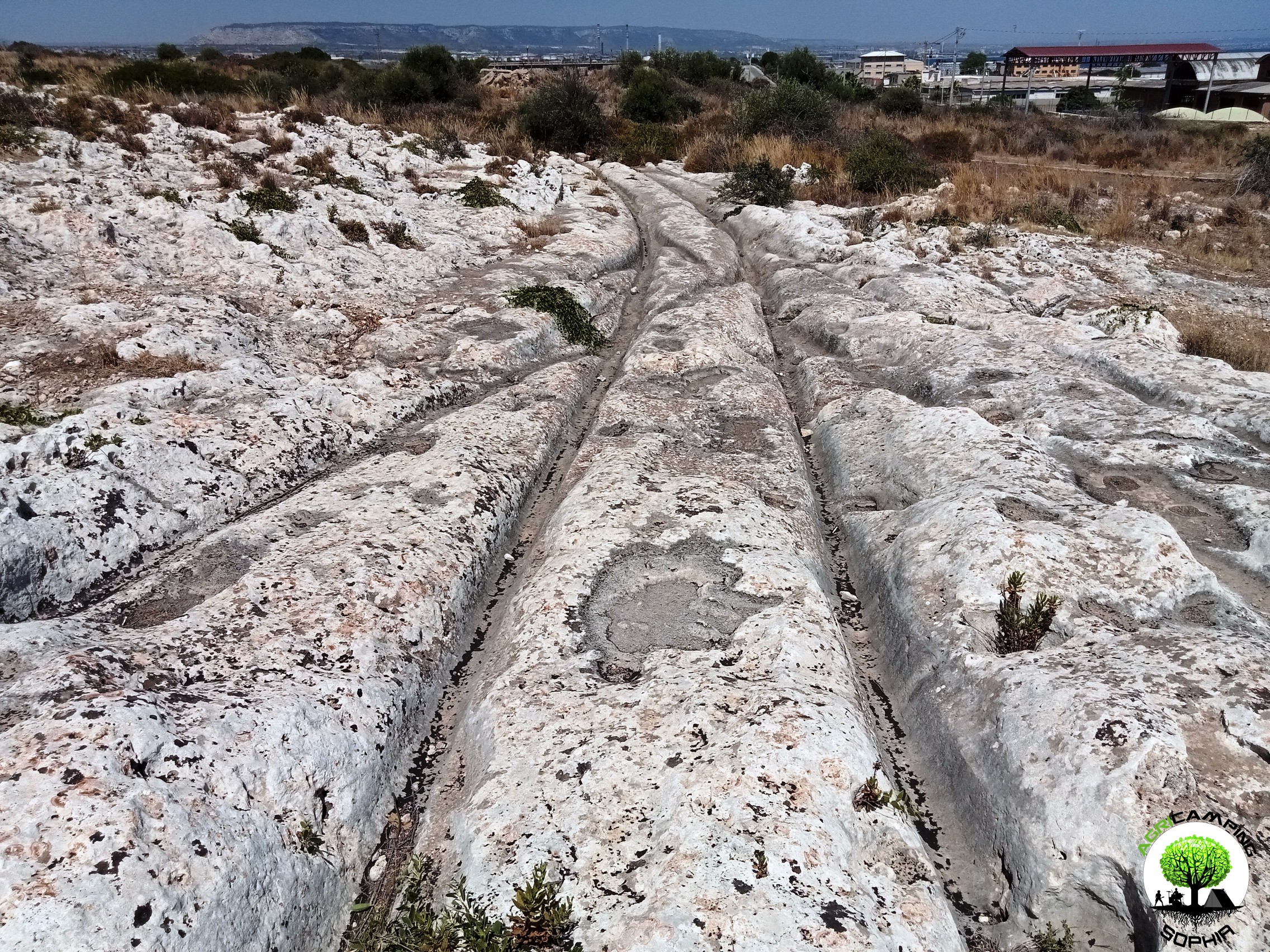 THE PROBLEM OF CART RUTS IN SOUTH-EASTERN SICILY (PART FOUR)
THE PROBLEM OF CART RUTS IN SOUTH-EASTERN SICILY (PART FOUR)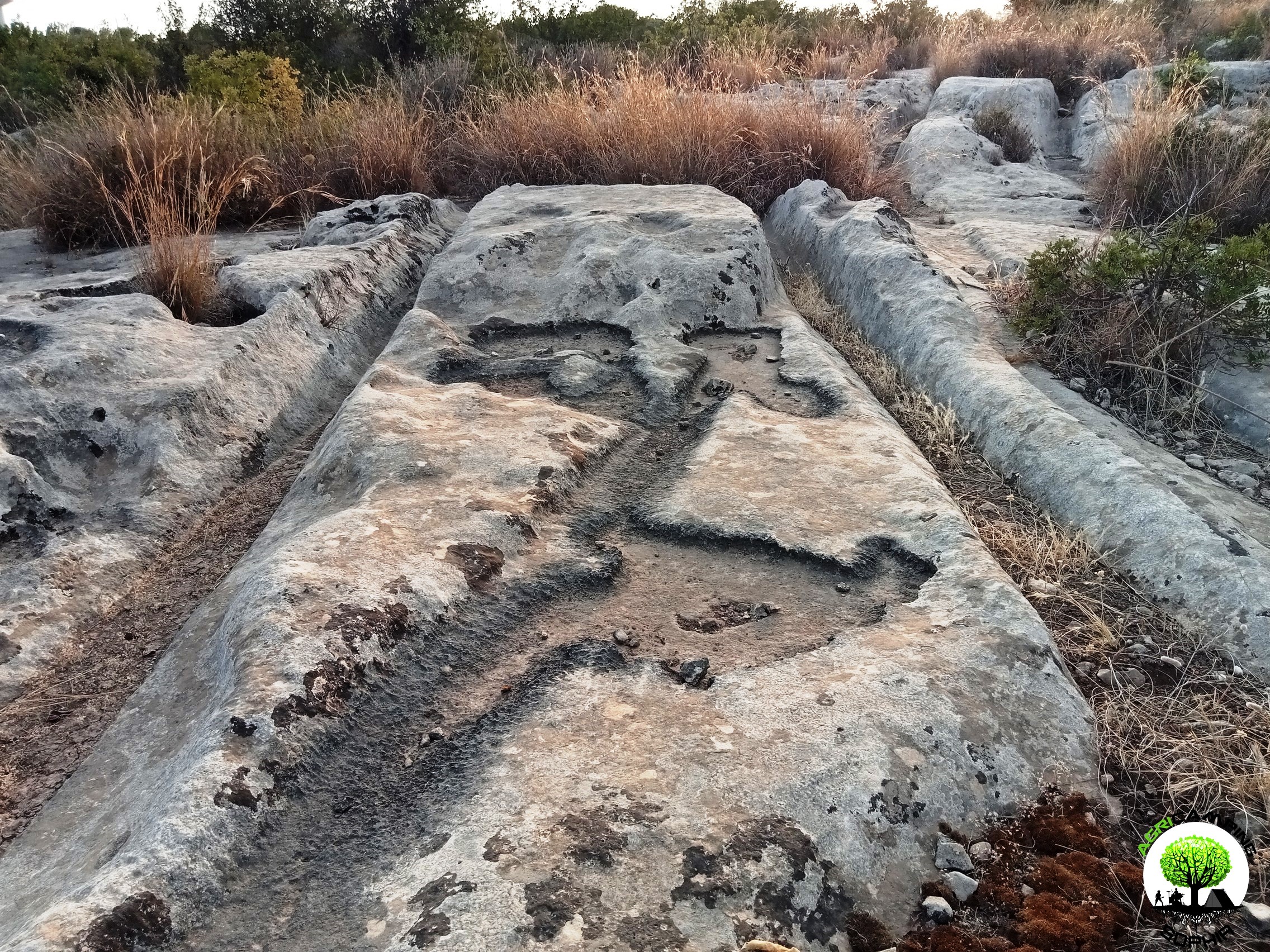 THE PROBLEM OF CART RUTS IN SOUTH-EASTERN SICILY (PART THREE)
THE PROBLEM OF CART RUTS IN SOUTH-EASTERN SICILY (PART THREE)